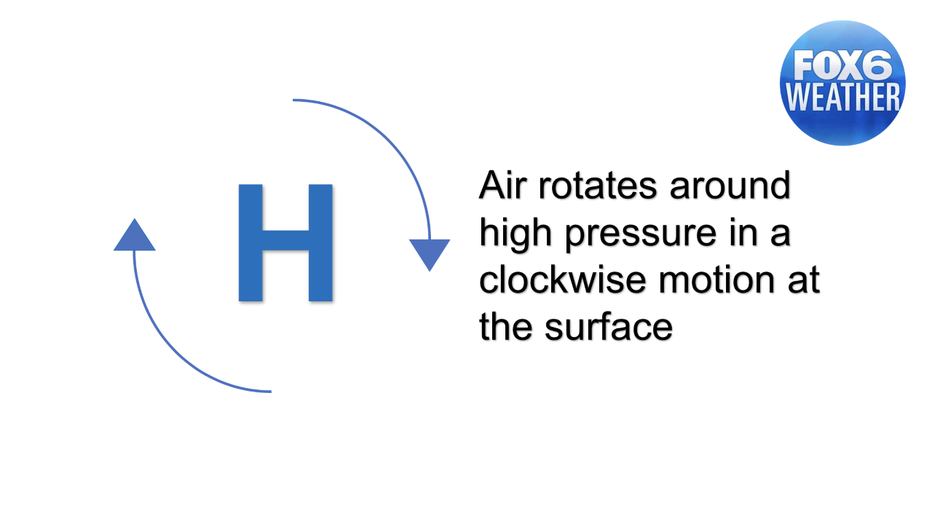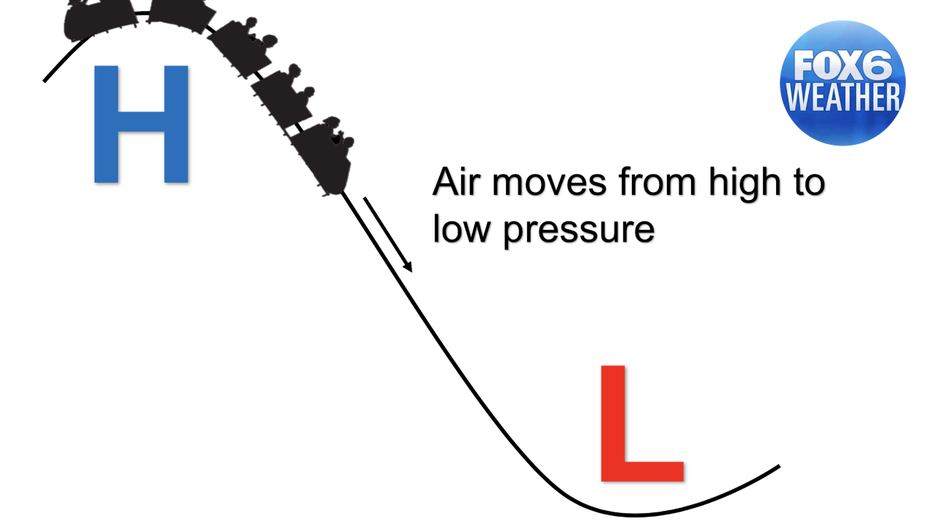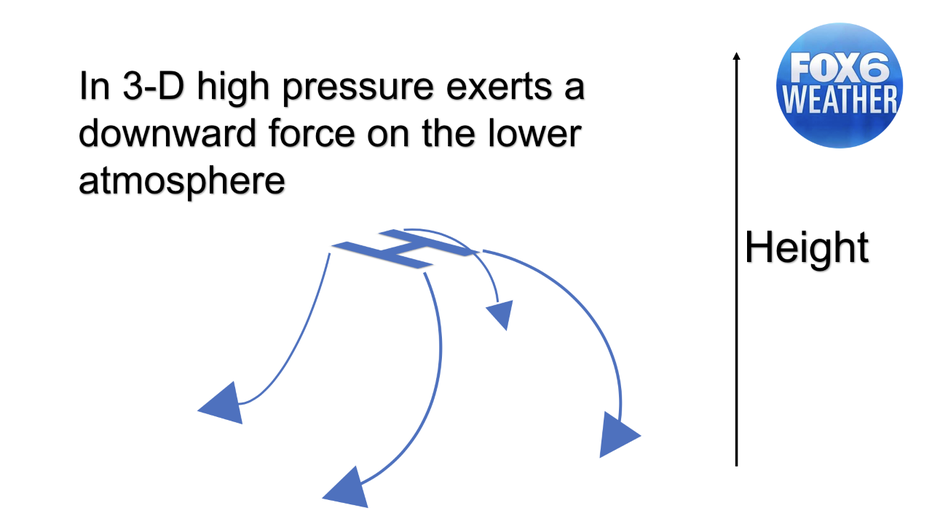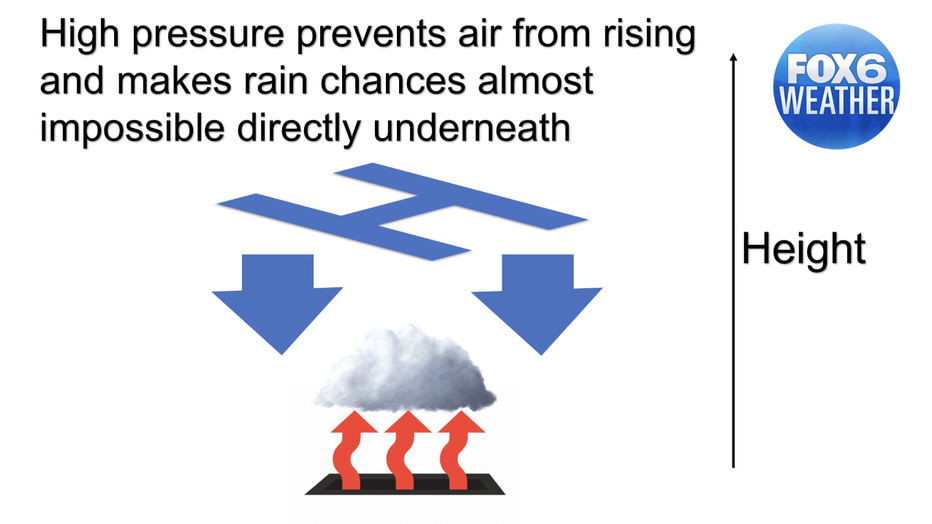Why high pressure prevents us from getting rain
SOUTHEAST WISCONSIN - At some point, you've likely seen a giant H on a weather map to represent high pressure. Typically, with high pressure, meteorologists can say the phrase "high and dry" along with it. But why is that?
One of the fundamental principles of meteorology is that air at the surface rotates around high pressure in a clockwise motion. While not always in a perfect circle, for explanation's sake with a 2-D view this is how weather works around a high.

Air rotates around high pressure like this at the surface
Another important principle of meteorology is that air moves from high to low pressure. Like a rollercoaster going over a giant drop, our atmosphere is constantly trying to get to a state of equilibrium. But the weather gets more complicated when you look at it in a 3-D view.

Air moves from high to low pressure like a rollercoaster down a drop
In three dimensions, the clockwise motion of high pressure isn't just moving away from the center but it's also moving downward. In reality, it's like a giant corkscrew going towards the ground with a slight twist.

High pressure exerts a downward force on the lower atmosphere while rotating clockwise
The reason why this downward motion is important when forecasting dry weather during high pressure is looking at how rain forms in the first place. As air warms, it rises. As that warm air gets higher in the atmosphere, it slowly cools and condenses into a cloud. Once that cloud of air becomes saturated with enough moisture raindrops will form and fall to the earth.

Warm air rises from the surface and as it does it cools in the upper atmosphere which causes water to condense and eventually fall out as rain.
Remember that downward motion high pressure exerts on the lower atmosphere? This prevents rising warm air from condensing into a cloud. It produces what we call a stable environment that prevents storms from being able to occur in the first place. Without any air being able to rise and condense out as a cloud, we don't get any clouds at all in some cases!
This is why with high pressure around it's generally easy to forecast no rain.

High pressure pushes down on air trying to rise at the surface and prevents moisture from cooling and condensing into raindrops.

